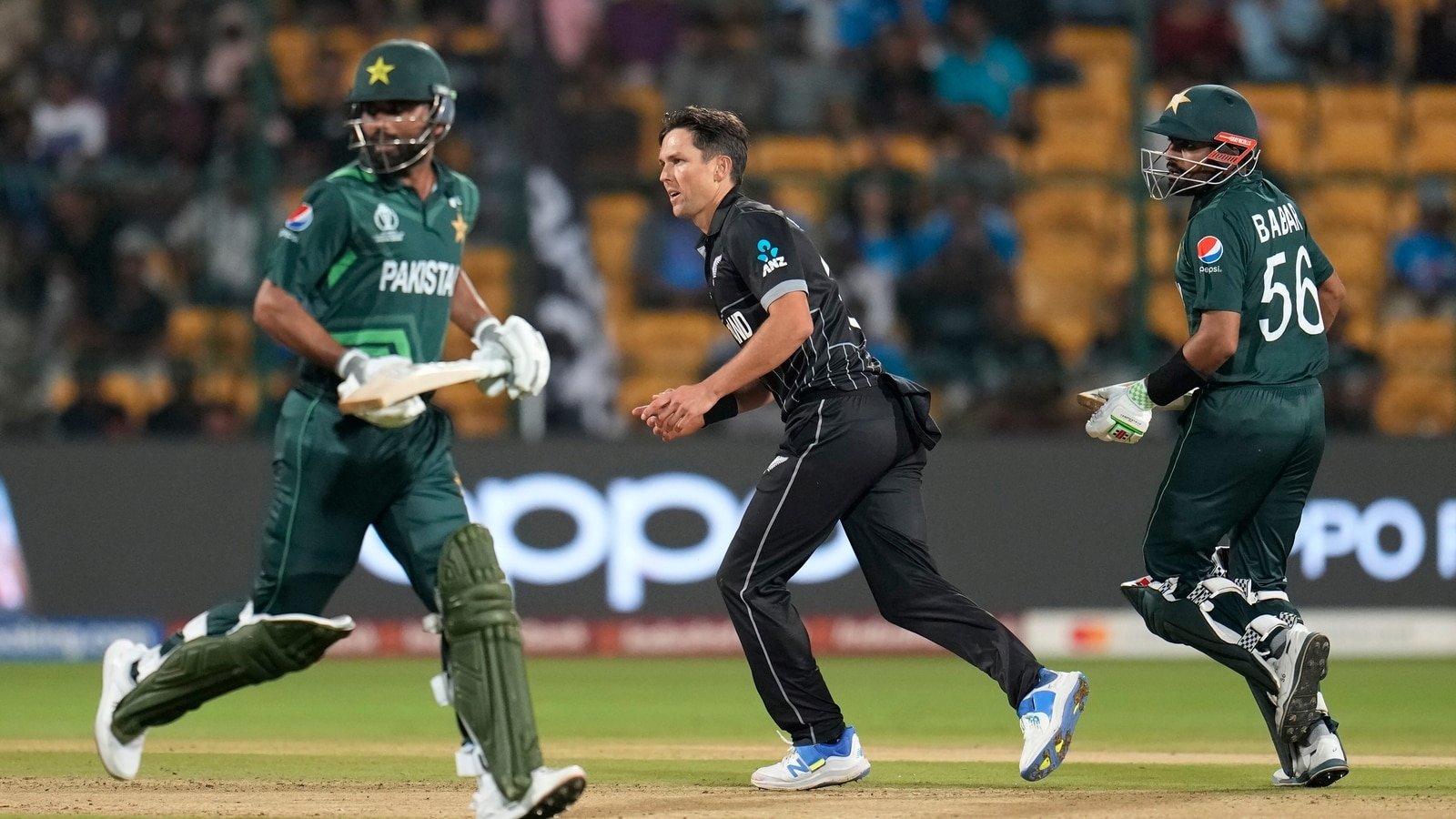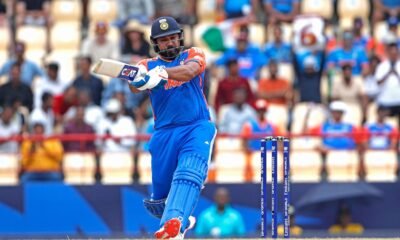Cricket
World Cup, cadence of ODIs and lopsided contests | Cricket
[ad_1]
The penultimate double header of this ODI World Cup produced games of contrasting character in Bengaluru and Ahmedabad on Saturday. The day game between Pakistan and New Zealand at the batting-friendly M Chinnaswamy Stadium witnessed a run fest where only rain curtailed the whirl of shots bludgeoned to the boundary.

In the 75.3 overs possible, 601 runs were scored for the loss of just seven wickets as Pakistan won via DLS method. A total of 21 sixes were hit, 11 clobbered by Fakhar Zaman deep into the stands. If inclement weather hadn’t been a factor, Pakistan had a shot at chasing down 402.
The day-night affair between Australia and England at the Narendra Modi Stadium stuck to a more conventional pattern with a total of 286 enough for a 33-run victory. The highest score was Marnus Labuschagne’s 71 in a game of fluctuating fortunes that Australia ultimately won. Chris Woakes produced a fine display of seam bowling, finishing with 4/54 in 9.3 overs. Later in the evening, leg spinner Adam Zampa exhibited control over his craft to claim the scalps of Jos Buttler, Ben Stokes and Moeen Ali while giving away just 21 runs in 10 overs.
That such a blanket of skills and situations entailed a day’s action has to be a tick in the box for the one-day game despite all its perceived flaws. Sure, more 350-plus totals – 11 – have been amassed in this edition than ever before. But the 50-over format still requires a blend of aggression and caution in doses unique to it.
It may seem to be a humdrum extension of T20s when sixes are smashed at will in Bengaluru, but other skills have also been summoned at this World Cup. There’s room for pace bowlers to conduct a rigorous examination of a batter’s technique with swing and seam. There’s scope for a batting anchor to settle down for the long haul and shift through the gears gradually. As there’s for a wily spinner to strangle the scoring options and weave a web through the middle overs.
Sample the riveting spell of play involving Mohammed Shami and Ben Stokes in Lucknow last week. So accurate was his radar and so perfect was his seam position that Shami didn’t let Stokes score for nine consecutive deliveries. Off the tenth, Stokes decided to move his front leg out of the way and slog to the leg side, only for the ball to nip back a fraction and dislodge the middle stump. The duel may have lasted just ten deliveries, but Shami had won the game of patience.
“What I’ve enjoyed in this tournament is the reminder how 50-over cricket is different from T20s. A lot of our focus in the last couple of years has been on T20 because of the World Cups in Australia and the UAE, but I’ve really enjoyed just being reminded about the differences in the rhythms of the game,” former England captain Mike Atherton told Sky Sports recently.
Even in a run fest on a flat deck, the elongated middle stretch of a one-dayer provides greater space for nuanced approaches than a T20 game. Atherton cited the example of South Africa hammering 399 against England in Mumbai when Heinrich Klaasen waited for the appropriate moment to press the accelerator even in a knock of 109 off 67 balls.
“When England got (David) Miller and (Aiden) Markram out, and Klaasen was in, he sat in for about 6-7 overs from the 35th over to the 42nd over, just waiting and then exploded at the end. That kind of slight change of rhythm in a slightly longer game has been fun to watch,” Atherton said.
That one-day cricket allows for the ball to also dominate bat has been encapsulated by India’s winning run. While their batters have done their bit, the unrelenting excellence of the bowling unit is at the core of their success. In eight games, they haven’t allowed any team to breach 300. In response to the ‘average’ rating that ICC gave to pitches in Chennai and Ahmedabad for their games against Australia and Pakistan, India coach Rahul Dravid underlined the appeal of the format demanding different skills.
“I think you have to see different skills on display. It’s not about if we wanted to see only fours and sixes being hit, then we have T20 wickets as well. If only those are good wickets, then why are the bowlers here? I disagree with that because I think we should see all skills on display,” Dravid had said.
At a time when obituaries on ODI cricket are ready for publishing – MCC president Mark Nicholas has said the 50-over format shouldn’t be played outside of World Cups – its ebb and flow seems to be recognised and appreciated by the players.
“We love playing ODI cricket. I’ve got no issues. You can see the game tonight, how good it was. That’s the beauty of ODI cricket,” said Australia all-rounder Cameron Green after the game in Ahmedabad on Saturday.
At the same time, there are pressing challenges that cannot be ignored. It can’t be feasible for games that last eight hours to be as one-sided as most in this tournament have been. Notwithstanding the odd upset – most notably Netherlands’ win over South Africa – the chasm between some of the teams needs to be addressed. In a tournament that has gone on for a month now, only South Africa’s one-wicket win over Pakistan and Australia’s five-run victory over New Zealand can be classified as humdingers of high quality. That’s two out of 37 completed games.
The format has its charms, but more has to be done to ensure a thriving product that isn’t fighting an incessant battle for relevance.
[ad_2]



















